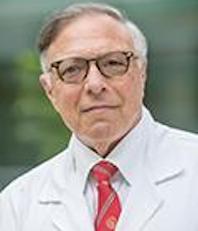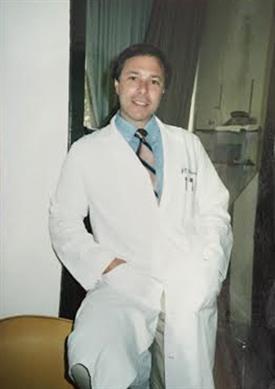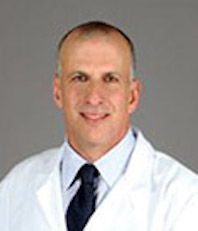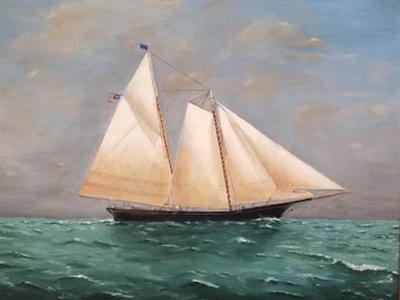Q & A with Jeffrey Harris, M.D., Ph.D.
 Jeffrey Harris, M.D., Ph.D., is Chief of the Division of Otolaryngology / Head & Neck Surgery, the largest division in the Department of Surgery at UC San Diego. In this interview, he reflects on his 38 years at UC San Diego, new happenings in the division—including a new center for acoustic neuroma; ethical dilemmas inherent in the surgical profession; and why he's optimistic about the future.
Jeffrey Harris, M.D., Ph.D., is Chief of the Division of Otolaryngology / Head & Neck Surgery, the largest division in the Department of Surgery at UC San Diego. In this interview, he reflects on his 38 years at UC San Diego, new happenings in the division—including a new center for acoustic neuroma; ethical dilemmas inherent in the surgical profession; and why he's optimistic about the future.
October 25, 2017 | Interview by Lindsay Morgan
When did you know you wanted to be a surgeon?
I didn't come into medicine thinking I would be a surgeon. I was more interested in research in immunology and pathology and infectious disease.
So how did you wind up an ear surgeon?
Good mentors. I had a group of ENT doctors who were really outstanding, who stimulated my interest in Otolaryngology. And then I was fortunate enough to go to Harvard, which was considered one of the best ENT residency programs in the country.
Is there something that drew you to this particular part of the body—the ear?
My grandfather was a watch maker, and he was very good at fine microscopic-type work. As a child, I would go to his shop and watch him work on little clocks and put watches back together. And I found that I had an aptitude for this fine motor skill-type work. When I went into Otolaryngology, one of the draws was microscopic surgery, using fine instruments and putting little ear bones together.
 You first came to UCSD in 1979 and became chief of the Division of Otolaryngology in 1986. Since then, the Division has seen tremendous growth.
You first came to UCSD in 1979 and became chief of the Division of Otolaryngology in 1986. Since then, the Division has seen tremendous growth.
When I took over, there were just four of us: two surgeons and two researchers. Today we have over 22 faculty and a fellowship. We're the biggest division in surgery.
And we have so many good people. I mean they are unbelievably talented folks. Due to the singular efforts of Dr. Deborah Watson, a busy facial plastic surgeon and a specialist in nasal reconstruction, who has also worked tirelessly as our Residency Program Director, we were able to expand our residency to three per year, as well as obtain additional funding for these positions through the VA Healthcare System.
I just recruited Dr. Linda Woo. She was one of our residents, and she's now our hospitalist at JMC. In the past, everyone was busy in clinic, or in the OR, and we'd get a consult from the floor, and we wouldn't have anybody to go see them. Now we're delivering better care.
We just recruited Dr. Ryan Orosco. Ryan is a superstar, he was a superstar from the moment he started as a resident, with a real bent for academic medicine. He went to Stanford to do a microvascular fellowship for reconstructing head and neck wounds and now is working with Dr. Califano.
And that just brings up Dr. Califano . There could not have been a better recruitment than Dr. Califano. We got the very pinnacle of head and neck academic surgery in the country. Dr. Califano works with Dr. Kevin Brumund and Dr. Charlie Coffey —this group is unparalleled.
Dr. Weissbrod is developing the newly opened Voice and Swallowing Center, and has recruited two speech pathologists who are well known. In addition, we have Dr. Deconde , who is a multitalented rhinologists and sinus surgeon. He has written more papers than anyone at that level and has the biggest clinical practice in the Department of Surgery.
Dr. Nguyen . I didn't mention Quyen. She has developed an incredible research program. She's known all over the world, invited to speak everywhere. She gave a TedMed speech and just started a biotech company for the fluorescence marker. She is so talented it's unbelievable.
Dr. Husseman. That guy can do anything. He works at Hillcrest. He can do anything. He sees trauma, he sees cancer, he sees otology, he sees sinus work, he is our jack of all trades and does everything well.
So it's not a bad group.
They're all right.
The Department recently announced the recruitment of Dr. Rick Friedman, MD, PhD, and Dr. Marc Schwartz, MD [shown below, respectively] , who are joining in November to build an Acoustic Neuroma Center. How did this come about what does it mean for the Division?

 Bringing this Center to UCSD is a capstone on the translational work that we've begun and continue to do. With the arrival of Drs. Friedman and Schwartz, we will have the premier acoustic neuroma program in the country. We are also introducing an auditory brain stem implant program. People who have bilateral acoustic neuroma have tumors that occur in the neural tissues in the spine and the brain and the inner ears. The tumors grow, often very rapidly, in young people. Right now, I have a young person who has bilateral tumors—he has a terrible future looking forward to being deaf because of this.
Bringing this Center to UCSD is a capstone on the translational work that we've begun and continue to do. With the arrival of Drs. Friedman and Schwartz, we will have the premier acoustic neuroma program in the country. We are also introducing an auditory brain stem implant program. People who have bilateral acoustic neuroma have tumors that occur in the neural tissues in the spine and the brain and the inner ears. The tumors grow, often very rapidly, in young people. Right now, I have a young person who has bilateral tumors—he has a terrible future looking forward to being deaf because of this.
Unfortunately, when we take these tumors out, we don't have any way of doing a cochlear implant, because often the cochlear nerve is wrapped up in the tumor. So even if you put a cochlear implant in, there's nothing to carry the signal to the brain.
But today we have the ability to do brain stem implants—we take the same technology and apply electrodes in the brainstem, next to the cells responsible for the auditory pathways. There are maybe three or four centers in the country that do this.
The Division of Otolaryngology partners with San Diego State University in California's first and only doctoral program in audiology, which has received accolades for its innovative curriculum. When did this partnership begin?
About ten years ago there was a movement in audiology to no longer recognize Masters-level audiologists, and to upgrade the training to a doctoral level. SDSU had a long tradition of audiology training, but by virtue of its charter, hasn't been allowed to grant doctoral degrees.
Steve Kramer, who was the chief of the audiology program over there, contacted me and said: what do you think about developing a joint program? With support from the deans of UCSD's graduate and medical school, and the deans at SDSU, we wrote a proposal, and it was approved. Now we have 40 graduate students. They spend an entire year in our clinical department, where they do audiograms, physiological testing, they stand beside me when I see a patient and hear the discussion about the disease that they only used to read about. It is an immersion into the clinical world that they would not have gotten had we not developed this joint program.
Erika Zettner is the director for UCSD and Carol Mackersie is the director at SDSU. Erika is miraculous. The students love her.
Let's talk about Otonomy , the company you co-founded with Drs. Allen Ryan, Jay Lichter, and Rick Friedman. UC San Diego is surrounded by an exploding biotechnology industry, which gives our researchers an extraordinary ability to define a clinical problem, develop new treatment strategies, and guide these treatments into the marketplace where they can help people. Tell me about your experience with Otonomy.
The real goal of any research is to help patients. And to help patients you need a vehicle to get whatever you're doing to the public. So, one of the issues we deal with is drug delivery to the inner ear. And the way we'd been doing this was so arcane, it was frustrating for patients and physicians. If we wanted to give a steroid to their inner ear, we would inject stuff, and it would squirt right back out at us through the little pin hole we would make in the eardrum, or go down the Eustachian tube.
Jay Lichter, a pharmaceutical scientist and biotech venture capitalist, came in as a patient with Meniere's disease. After treating him, he said he wanted to talk about developing a company to help figure out how to better treat people who have these diseases. We met with Kevin Kansella, the CEO of Avalon Ventures, and in 2004, decided to start a company. Today the company employs some 120 people and is the only biotech in Otology with an FDA-approved drug, an antibiotic called Otiprio, which was approved for children who have infections with pressure equalizing tubes used for recurring middle ear infections.
When surgeons partner with for-profit companies, is there a potential conflict of interest, or risk of perverse incentives?
That's a good question. Anyone who brings something to a company and has potential for gain has to struggle with keeping their hands clean. In order for me to keep my hands clean, I'm never involved in any studies—I don't participate in any of the trials. I don't look at the data, I don't analyze the data. And the university prevents me from having a conflict. They have very strict rules. The university itself has to deal with this, because they get royalties and milestone payments, just like I do. But there are rules set up and there are ways that we all are transparent and I think that anyone who came in and looked at this relationship, they would see that it's very clean.
W hat have been some of the most significant advances in your field since you began?
Cochlear implants really changed how we looked at deafness. When I was a resident, we would see someone with deafness and say, you should go home and try these really loud hearing aids and see what you can do. If they were young, you'd tell them to go learn sign language. And there was nothing else you could do. Helen Keller said that if she had to choose, she'd regain hearing rather than sight. Inability to hear is extraordinarily isolating.
Today can put people back to jobs, back in school. I was the first person to do cochlear implants in San Diego, and I wrote a paper showing that the socioeconomic benefits of cochlear implants are so huge, that they were approved for MediCal.
The other thing that has been a huge boon to our practices is the use of telescopes in image guided systems. When I was a resident, you would just sort of take a little speculum, open the nostril, look in there and start taking things out. You'd do it by touch, feel, and your knowledge of the anatomy. Now it's all done under direct visualization, which has made it a lot safer and opened up areas that you could never do easily in the past.
I'm thinking about the patient you mentioned, with bilateral tumors, and the prospect for his life. Before I joined the Department, I worked in international development—the business of poverty alleviation. In that line of work, you are confronted all the time with the fact that life is not fair, that life is inequitable, that life is very hard for a lot of people. You do what you can to chip away at poverty, but it's still there.
Is it similar in your profession? What sort of dilemmas do you face in your work?
I struggle with resource allocation. Cochlear implants cost $40,000 per person. And if someone who's 90 years old comes in and says, doc, I can't communicate with anybody and I want a cochlear implant, I say to myself: is this what society can afford to do on somebody who has a life expectancy of 2-3 years at the most?
I struggle with the recommendations I make to people, because I am the enabler of that kind of resource allocation without any ethical input from anybody. It's my decision. Do I want to do it or don't I want to do it? Talk about conflict of interest – I get paid to do it. So, when you think about that, you say to yourself: is this the right thing to do?
But then you do it. Because you have nobody who will say you can't do it and you have a moral obligation to improve somebody's quality of life. And when you see these people back, they are so happy. You have changed that last few years of their life in a huge way – I mean these are people who are headed towards dementia because they lose their ability to cognate because they can't communicate with anybody.
As far as fairness, yeah. I remember to this moment— to this moment—taking care of a patient at Harvard when I was a resident, who had sinonasal cancer. Undifferentiated. Highly aggressive. This woman came in; I diagnosed her. She was 28 years old, had a little nose bleed. I looked up inside there and I saw this ugly thing inside her nose. She then went about having the usual things that happen in those days, which is, you make an incision along the side of the nose, turn the nose up, go in, do a wide excision of everything that that cancer touches. And she was good for six months. And then she started to have swelling in her eye. We got an x-ray. She'd had invasion into her eye. So we had to take out her eye. And then she had brain metastatis, and it invaded her brain and she died on the floor.
Is it fair? No, it's not fair.
As a surgeon, I say to myself: I can do the best I can for this one person. The best thing I can for humanity is to figure out how to prevent the disease from occurring, and, instead of one patient at a time, develop a company that can treat something. Or develop a research project that can uncovered the cause of this and help many patients. That's what drives academic doctors—to find the cure, the cause.
My last question is a frivolous one. If you were not a surgeon and you had a whole other life to live, what would you do for a living?
I like to paint. I'm a decent painter. But that's work. And surgery isn't work. Surgery is easy for me. Painting is hard. I have to labor over painting to make it as good as I want it to be. Honestly, to think of a profession I would like to have rather been, I can't think I have one.
So this is vocation.
Yeah, this is. Which is why I still work. I love what I do. And I'm very optimistic about the future.

Caption: Painting by Dr. Jeffrey Harris.
